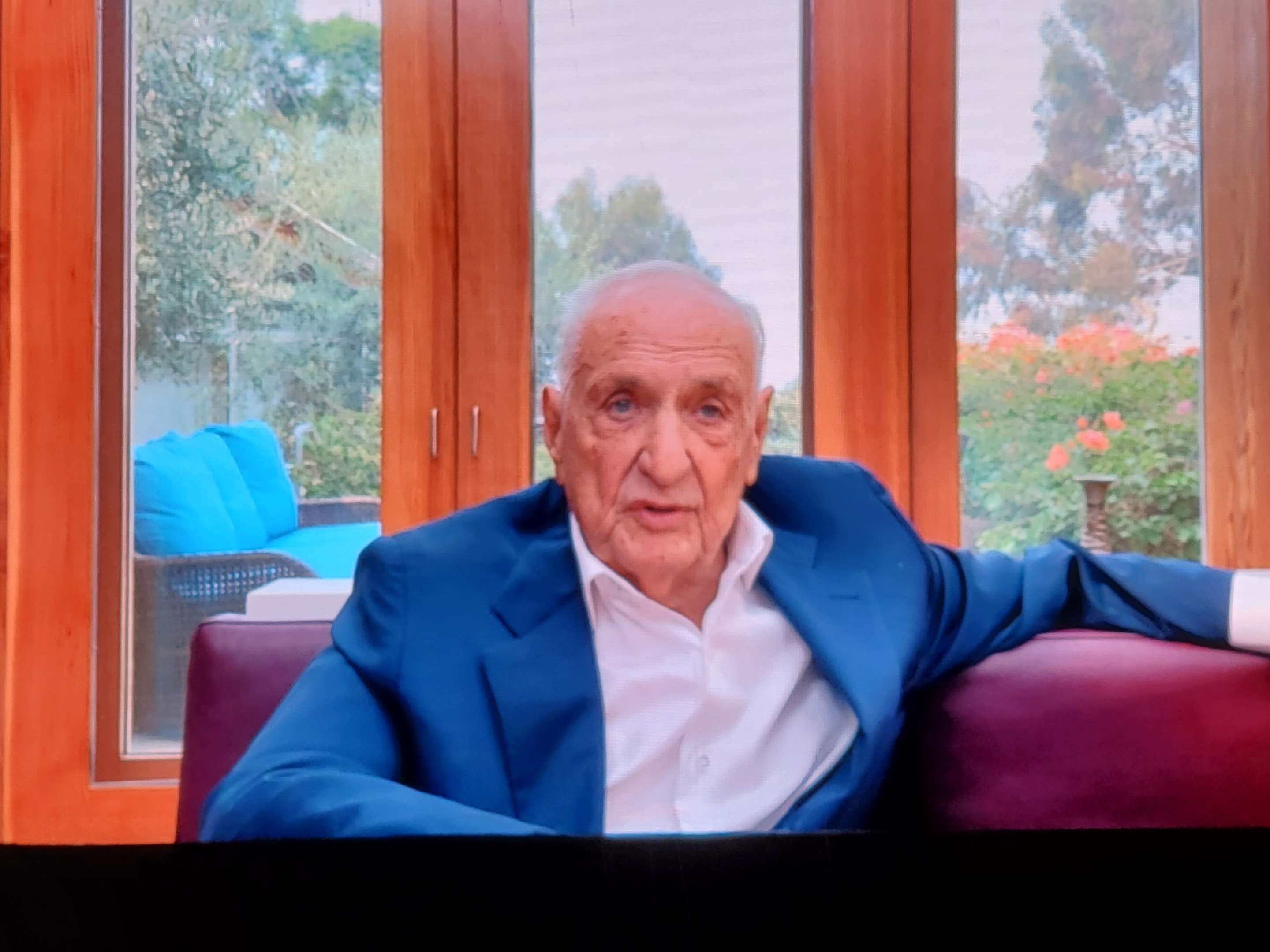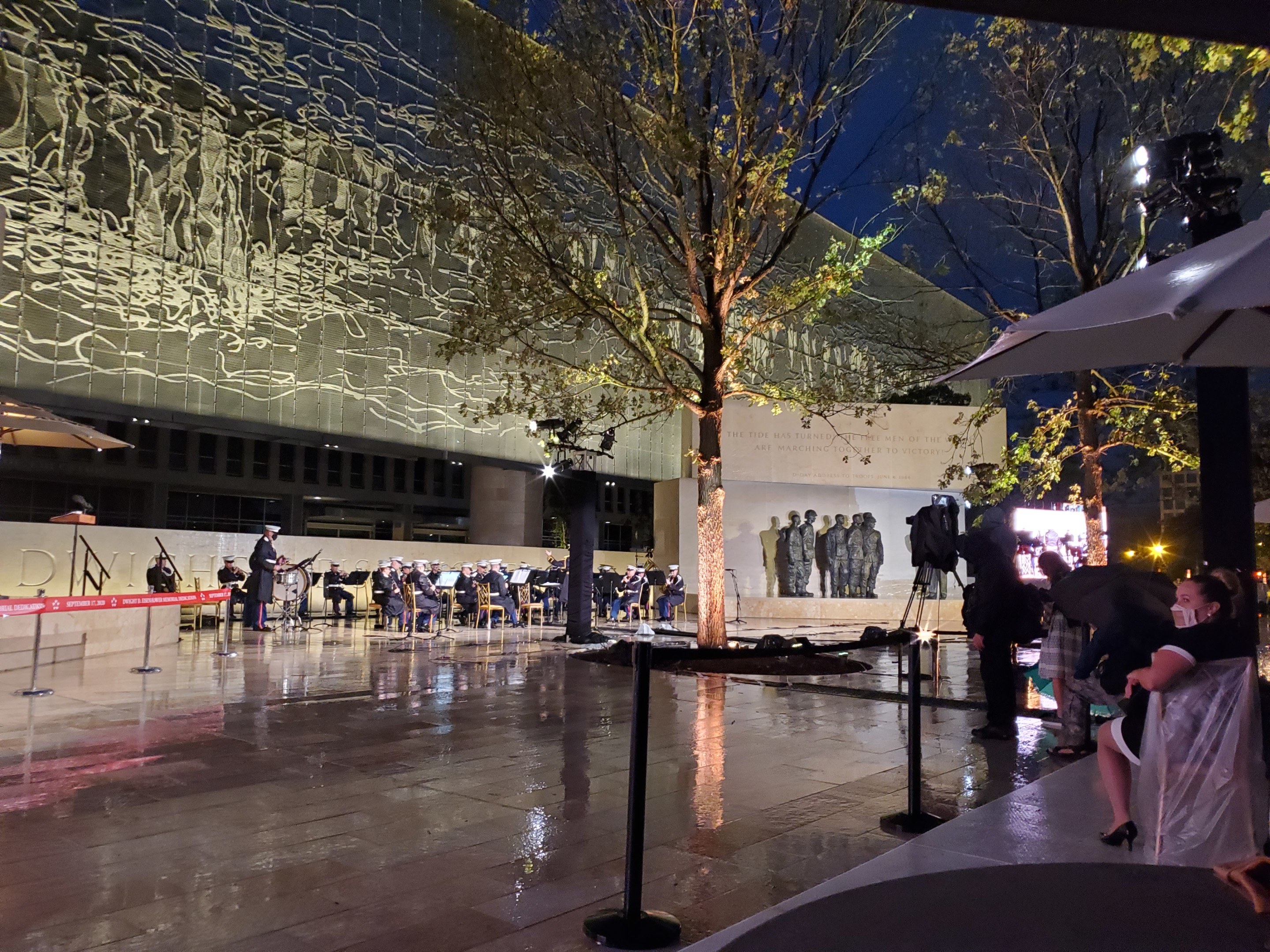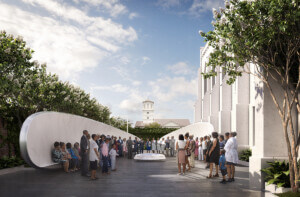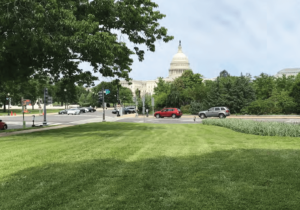Frank Gehry has had many highlights in his career, but he says completion of the Dwight D. Eisenhower Memorial is “one of my proudest moments.”
Unable to attend the memorial’s dedication on September 17 due to the coronavirus pandemic, Gehry, 91, sent a recorded greeting reflecting on his years working on the project, his first public project in the nation’s capital and first memorial anywhere.
“I’m so greatly honored to be part of this effort to memorialize Dwight D. Eisenhower in Washington, D. C.,” he said. “To prepare for this formidable task, I studied everything, I read everything that I could find on his accomplishments, and they were vast. What a legacy.
“At first glance the site wasn’t, or didn’t, seem great, surrounded by traffic and office buildings. But that was it. And with the help of many, starting with words of encouragement from [former Sen.] Daniel Inouye and relentless support of members of the Eisenhower Memorial Commission, led by the indomitable Senator Pat Roberts, we got it done.
“There were sensitivities for sure, expressed by many, including the Eisenhower family. We listened to all, and the result is better. For my life, this is one of my proudest moments, and I only regret that I can’t be there to enjoy this with you.”

Opening to the public September 18, the memorial is a $150 million, 4-acre urban park that traces Eisenhower’s coming of age, from a young man leaving Abilene, Kansas, at 20 to go to the U. S. Military Academy at West Point, to his selection as Supreme Allied Commander during World War II, to his tenure as the 34th President of the United States, 1953 to 1961. It’s the 420th “unit” of the National Park Service and the seventh memorial to a U. S. President in Washington, D. C.
Through sculptures, detailed by sculptor Sergey Eylanbekov and other artwork, including a large stainless steel “tapestry” by Tomas Osinski, the memorial makes the point that America was transitioning during the same time from “humble beginnings to global leadership,” as Roberts put it, and Eisenhower led the way.
The Gehry Partners-AECOM Eisenhower Memorial Design Team A Joint Venture, with Gehry as the lead designer, tackled the commission.
More than 100 invited guests sat beneath large umbrellas in a steady rain to hear speeches and patriotic music and watch dignitaries cut the ribbon for the two-block–long memorial, located just off the National Mall along Independence Avenue between 4th and 6th streets, N. W.
Some speakers came in person while others appeared via videos shown on Jumbo-screen monitors. NASA Astronaut Christopher Cassidy spoke from the International Space Station to remind viewers that the Eisenhower administration created the National Aeronautics and Space Administration in 1958.
In a ceremony streamed on C-Span and Facebook, several of the speakers praised Gehry and other artists for their work. Roberts, head of the Eisenhower commission, spoke to Gehry directly.
“Frank, I know you and your team are watching,” he said. “The brilliance of this memorial will reverberate around the world and lift the legacy of Dwight D. Eisenhower to unending global audiences.”
Eisenhower’s grandson, David Eisenhower, said he particularly appreciated the figure of a young Dwight Eisenhower because it provides a meaningful symbol for young people.
David Eisenhower said one of his former students noted at the groundbreaking in 2017 that it’s unusual for a memorial, typically a place to glorify historic figures or scenes, to depict young people as role models.

Granddaughter Susan Eisenhower, also appearing on video, said she was grateful for the spirit of “compromise and progress” that emerged during the design process as the architects, family members, and memorial commission members debated how best to tell Eisenhower’s story.
“All of these various sides coming together made this memorial bigger, more meaningful and more monumental, and I am so deeply grateful for that,” she said.
“As we all know, the question of memorialization has become an issue over the last several years,” David Eisenhower said.
“A truth, I believe, has emerged in the discussions: That memorials indeed preserve history and they also do, and must, reflect our values. And so, in the end, therefore, the test of a memorial is timelessness. And timelessness is something I believe has been achieved by this memorial.”
Memorials “act as historical touchstones,” Roberts said. “They are the intersection of memories and history. They are meant to inspire contemplation and reflection about events and people like Eisenhower, who shaped our history profoundly.”
Roberts said he hopes that Gehry’s memorial not only makes visitors more aware of Eisenhower’s accomplishments but prompts Americans to “reflect on where we are today” and how they can contribute to society.
“This memorial teaches us that through all of the darkness there is light,” he said, “and this memorial comes exactly at the right time to provide some light in our troubling times.”
AN will follow this dedication recap with a full review of the project, one that touches on the memorial’s tumultuous competition and design process. In the meantime, more images of the memorial in the day, sans guests, can be found here.











